Welcome to the Virtual Base Camp, the starting point for your exploration of the polar regions with PolarTREC teachers and researchers!
2013 Expedition Timeline
Expeditions
Carbon Balance in Warming and Drying Tundra 2013
What Are They Doing?

Little is known about respiration in the arctic winter. The team used five different methods in hopes of finding the best way to measure how much carbon is being released from northern ecosystems in the winter. Measuring winter respiration directly from experimentally warmed plots and understanding the drivers of wintertime tundra respiration will have the added benefit of being able to improve global arctic carbon models. More information about the project can be found here.
Expedition Map
Airborne Survey of Polar Ice 2013
What Are They Doing?

Expedition Map
Reconstructing the Past Climate of Central Alaska
What Are They Doing?

Research at this site is important as it completes the development of a spatial ice core array (a range of data) in the North Pacific that has been underway since the early 2000s, including climate records from the St. Elias Mountains, Coast Range, Brooks Range, and Wrangell Mountains. Mt. Hunter in central Alaska lies in a different precipitation and climate regime from these regions, and thus represents the missing piece in this array needed to evaluate spatial precipitation and atmospheric circulation changes on various timescales in this region of the Arctic. Considering the apparent teleconnections (climate phenomena related to each other and occurring large distances from one another) between the Arctic and Antarctic climate and meteorology, completing this array of ice cores may also provide information that is particularly useful for world glaciological and climate modeling purposes. More information about the project can be found at the University of Maine website.
Expedition Map
Arctic Wetland Dynamics in Finland
What Are They Doing?

The Arctic is experiencing the most dramatic warming due to climate change of all global systems. As arctic soils warm, the resulting rise in microbial activity increases emissions of carbon dioxide and methane, further accelerating global climate change. Because the vast majority of global carbon is stored in soils, and soil carbon is in flux with atmospheric carbon, soil microbes can either alter or exacerbate climate changes.
Methane is a powerful, carbon-based greenhouse gas, and wetlands are the largest natural source of methane to the atmosphere, but factors that influence net methane emissions from arctic wetland soils are not well understood. The Lapland region of northern Finland offered an ideal research environment because it has carbon-rich arctic wetlands different from those that exist in North America, offering the opportunity to comparatively study the controls on methane flux from arctic wetland ecosystems. More generally, carbon cycling research is critical for building accurate global climate models, which inform social and international climate change mitigation policies.
Expedition Map
Biology of Antarctic Fishes 2013
What Are They Doing?

The loss of hemoglobin is considered a neutral mutation; one that neither enhances nor reduces fitness. However, the team hypothesizes that the loss of hemoglobin may be an advantage because hemoglobin promotes the formation of reactive oxygen species that damage macromolecules. Overall, the team's research was aimed at understanding the unique physiological and biochemical traits that have arisen in fishes during their evolution in the chronically cold waters of the Southern Ocean.
Expedition Map
Arctic Ground Squirrel Studies
What Are They Doing?
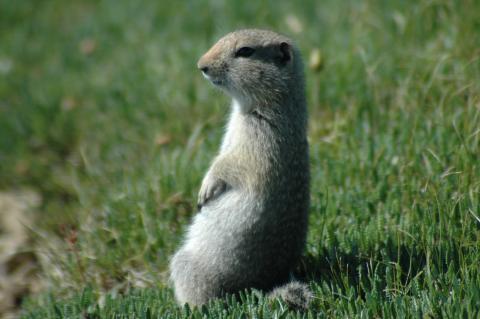
The research team has recently found that the arctic ground squirrel displays daily rhythms of body temperature throughout the arctic summer, in the absence of a light-dark cycle. The current study continues investigate the circadian rhythms in arctic ground squirrels during the continuous daylight present during the active summer season and continuous dark of the 6-8 months of hibernation spent sequestered in a burrow. The team wants to understand why arctic ground squirrels, unlike other arctic vertebrates, appear to maintain 24-hour rhythms during the active season. They hypothesize that the persistence of circadian rhythmicity allows ground squirrels to reduce energy expenditure by anticipating predictable changes in its immediate surroundings. They continue to test their hypothesis by experimentally phase-shifting free-living ground squirrels to be active at 'night' and estimating their subsequent rates of energy expenditure.
Expedition Map
Arctic Sunlight and Microbial Interactions
What Are They Doing?
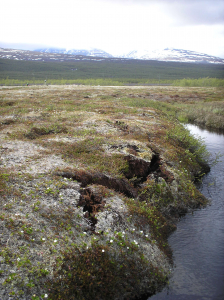
The research team is trying to understanding exactly how sunlight and bacteria degrade dissolved organic matter by determining how fast these processes convert newly released dissolved organic matter to carbon dioxide, compared to dissolved organic matter already in surface waters. The team will accomplish their research objectives with a series of laboratory experiments to determine rates of photodegradation and microbial processing of dissolved organic matter from different sources, and a series of landscape comparisons and sampling transects to characterize dissolved organic matter degradation in small basins and large rivers extending from the headwaters to the Arctic Ocean. Ultimately, this research will attempt to answer questions such as whether carbon export from tundra to oceans will rise or fall and how reactive the exported carbon will be. The team hopes to be able to measure the ultimate impact of impending disturbances, including climate change, on the net carbon balance of the Arctic and its interaction with the global carbon cycle.
Expedition Map
Predatory Spiders in the Arctic Food Web 2013
What Are They Doing?
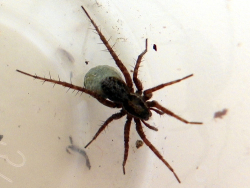
This project explored the role of wolf spiders within arctic communities and specifically, whether climate change is stimulating changes in these predators that could influence the structure and function of food webs. In particular, arctic warming could increase decomposition of the large amounts of carbon stored in permafrost soils. Increased decomposition would result in higher levels of atmospheric carbon dioxide and methane, which are heat-trapping greenhouse gases. Potential shifts in spider feeding ecology as a result of climate change could therefore have important and far-reaching consequences for arctic plant community dynamics and ecosystem processes. This research examined the extent to which arctic wolf spiders influence the structure and function of food webs and measured whether their impact on the community is changing with warming.
Expedition Map
Joint Science Education Project 2013
What Are They Doing?
The expedition members visited several research sites in Greenland as part of an initiative to foster enhanced international scientific cooperation between the countries of United States, Denmark, and Greenland. The expedition members spent several days learning about the research conducted in Greenland, the logistics involved in supporting the research, and gain first-hand experience conducting experiments and developing inquiry-based educational activities.
In 2013, the work built on past expeditions and was supported by the National Science Foundation. The project was developed through cooperation with the U.S.-Denmark-Greenland Joint Committee, which was established in 2004 to broaden and deepen cooperation among the United States, the Kingdom of Denmark, and Greenland.
The program had two components
Kangerlussuaq Science Field School: 28 June - 10 July 2013
Science Education Week: 11- 18 July 2013
Expedition Map
Historical Ecology for Risk Management
What Are They Doing?

Historical ecology is an applied research program that focuses on interactions of people and their environments. Research applications involve studying and understanding this relationship in both time and space to gain a full picture of all of its accumulated effects. The research program can be applied to understanding changes among community landscapes that can assist strategies for the future. For this proposal the emphases align with the ARIES mission that combines research, education, and community outreach.
The emphases are 1) a bibliographic database of relevant historical resources, 2) an examination of the shoreline to provide a time-series baseline 3) simulation models to demonstrate socio-natural cycles of change for the North Slope shoreline, 4) the historical ecology study of the shoreline, interactive mapping and database available as a web based resource to assist academia, industry, regional government and local communities for socio-cultural and management purposes, 5) an integrated team who can work with interested researchers, industry planners and Risk Management of the North Slope Borough to extract data and provide simulation models that apply to current studies of the region and 6) provide a variety of eco-heritage opportunities that include community participation in research, educational products, age level appropriate activities and outreaches for community service learning.
This includes natural and social science research and use of eco-heritage data for disaster preparedness among the "Next Generation", that is, middle and high school students. This aligns with the Cumulative Risk Integrated Operability Project (CRIOS) with DHS CREATE funds, since 2008, to reduce risks across emergency management jurisdictions of tribally inclusive geographic areas (TIGA). Here is the project website.
Expedition Map
Chukchi Sea Ecosystem Study
What Are They Doing?

The research team included scientists from seven institutions and two federal agencies. The work took place over dozens of existing sampling stations and involved collaboration with other science studies in the region sponsored by federal, state, or industry interests. Due to the biological significance of this region and its importance for oil and gas exploration and development, the group examined the range of biological, chemical, and physical properties that define this ecosystem.
The group focused their efforts on the Hanna Shoal region, with the addition of a pelagic (from the open ocean) component to address standing stocks of phytoplankton and zooplankton, and a physical oceanographic study that addressed water mass movements through direct measurement of circulation, density, and ice conditions.
Expedition Map
Drumlin Formation in Iceland
What Are They Doing?
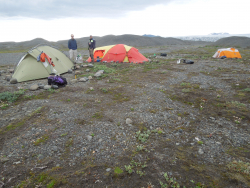
The research team collected intact till (rocks and finely ground material picked up by a glacier, and deposited as sediment along its path) samples from the drumlins and the surrounding area. The samples were taken back to Iowa State University and the University of Wisconsin Milwaukee and subjected to geotechnical tests and magnetic fabric analyses. This testing determined the former distribution of stresses on the till and patterns of subglacial till deformation that were likely central to the formation of the drumlins. In addition to helping determine the internal structure of drumlins and how drumlins form, this research will shed light on the distribution of basal drag beneath glaciers—an important and poorly understood factor in their dynamics.
Expedition Map
Northern Alaska Coastal Ecosystems
What Are They Doing?
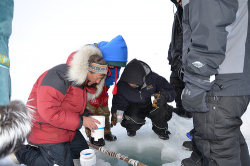
Research sites ranged from lagoons to open coastal systems and each site was used to examine linkages between biological communities and organic matter inputs from land. Measurements of water and sediment chemistry, and benthic and water column community characteristics were used to evaluate the importance of terrestrial inputs under different hydrologic/hydrographic conditions.
Understanding the fate of terrestrial carbon in arctic coastal waters is especially important now as the arctic system enters a period of rapid climatic change. Changes in terrestrial organic matter export could influence the productivity and roles of organisms in arctic coastal waters. Such shifts have consequences for local human populations that fish and hunt for subsistence and for the broad scientific community interested in land-sea coupling.
In addition to their research, the team continued their successful K-12 outreach program entitled "Climate Change in the Arctic: An Interactive Program Linking Scientists with K-12 Students". This included the continuation of a summer field science program for native Kaktovik K-12 students. The Village Council has continued to express keen enthusiasm to involve school children in hands-on science activities that support learning of key science concepts.
In addition, PolarTREC teacher Jill Smith learned about the cultural importance of the annual bowhead whale hunt that began while she was in residence at Kaktovik. She had the opportunity to share this information through real-time video connections with her students in her home classrooms in Texas, enabling students from Texas to have direct dialogues with students in rural Alaska.
Expedition Map
Tectonic History of the Transantarctic Mountains 2013
What Are They Doing?

The goal of this project, funded by the National Science Foundation, was to broaden our knowledge of geology in this region with a new seismic array; the Transantarctic Mountains Northern Network (TAMNNET), a 15-station array across the northern TAMs and the WSB that helped fill a major gap in seismic coverage. Data from TAMNNET was be combined with that from previous and ongoing seismic initiatives and was analyzed to generate an image of the seismic structure beneath the TAMs and the WSB.
While in the field, the team spent most of their time servicing the seismic stations that compose the new TAMNNET array. This included loading equipment onto small airplanes, flying to remote field locations, uncovering the deployed equipment, and checking for any maintenance issues. The first batch of data from the network was also retrieved during this time.
Expedition Map
Soil Ecology in Antarctic Dry Valleys
What Are They Doing?

The goal of this project was to identify active members of the McMurdo Dry Valley soil microbial community and determine their ecological role. Little is known about bacterial populations in the Dry Valley soils, but until it is understood which populations are active and what they do, it is impossible to understand the ecological role that bacteria play in ecosystem function.
Expedition Map
Ice Cube Neutrino Observatory 2013
What Are They Doing?
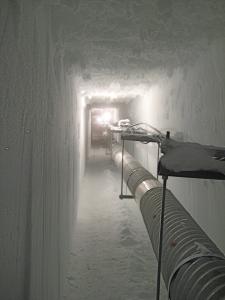
All neutrino detectors rely on observing the extremely rare instances when a neutrino does interact with a proton or neutron. This transforms the neutrino into a charged particle of the same type as the neutrino flavor (electron, muon, or tau). Muons are charged particles that can travel for 5-10 miles (8-16 kilometres) through matter depending on their energy, and generate detectable light in translucent media.
IceCube is made up of thousands of sensitive light detectors embedded in a cubic kilometre of ice between 1450 m and 2450 m below surface. The sensors are deployed on strings in the ice holes that were made using a hot water drill. IceCube detects about 300,000 neutrinos a year, and has a projected life time of two decades. The data collected will be used to make a "neutrino map" of the universe and to learn more about astronomical phenomena, like gamma ray bursts, black holes, exploding stars, and other aspects of nuclear and particle physics. However, the true potential of IceCube is discovery; the opening of each new astronomical window leads to unexpected discoveries.
















